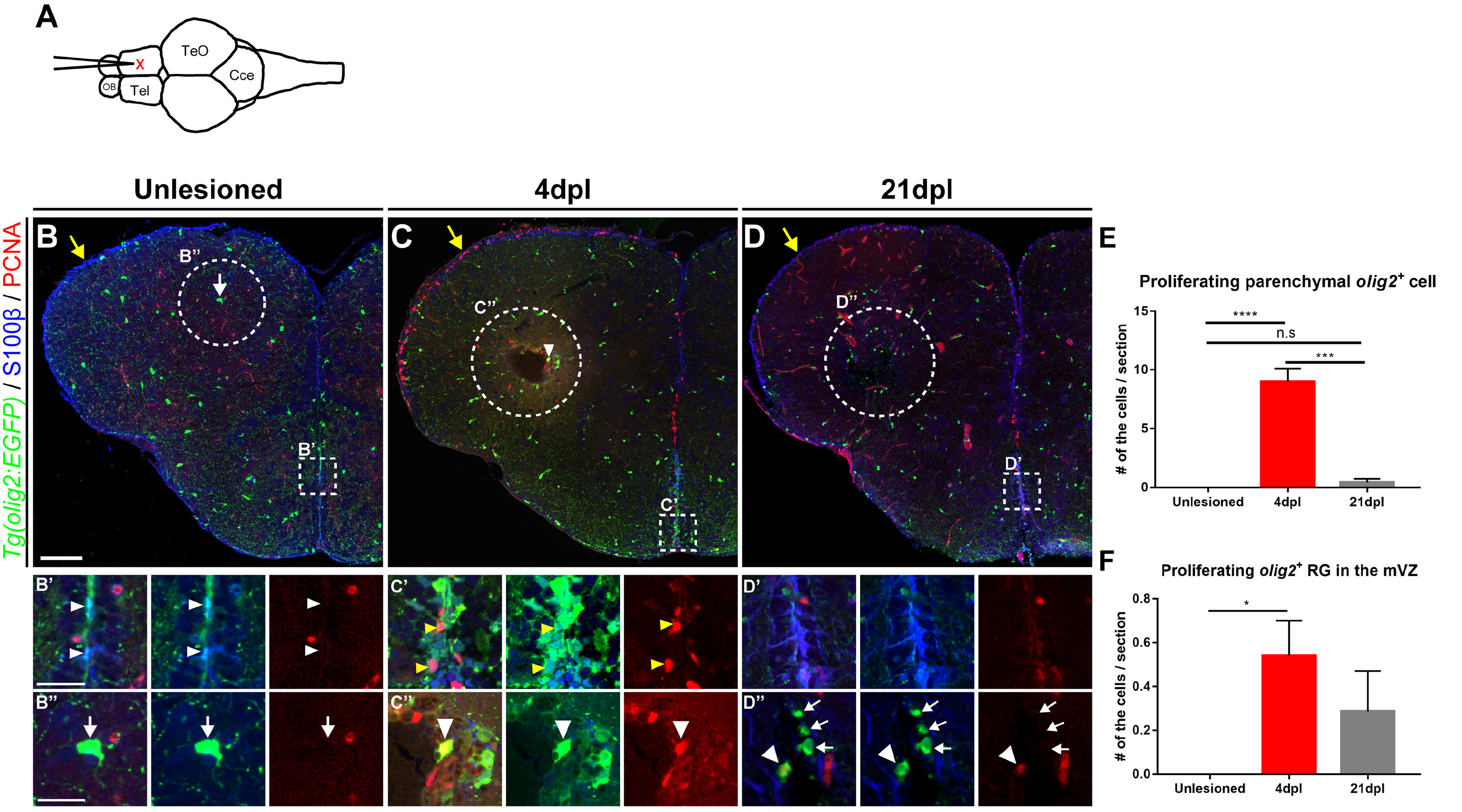
Fig. 2. Proliferation of Olig2+ RG and parenchymal OPCs is increased in the injured hemisphere of the adult telencephalon. All panels show transverse sections of the telencephalon, with the dorsal side at the top. (A) Scheme depicting the stab wound paradigm in the adult zebrafish telencephalon. (B~D) Labeling of adult Tg(olig2:EGFP) zebrafish with a proliferation marker (PCNA) and RG marker (S100β) in the uninjured controls (B), 4 days post-lesion (dpl) (C), and 21 dpl (D). Yellow arrows indicate the LVZ area of the injured hemisphere of the telencephalon. (B’~D’) The MVZ of the normal (B’) and injured hemisphere (C’, D’) of the telencephalon. White arrowheads indicate olig2:EGFP+/PCNA- non-proliferating RG (B’) and yellow arrowheads indicate olig2:EGFP+/PCNA+ proliferating RG (C’). (B”~C’’) The parenchymal area of the wildtype (B”) and injured hemispheres (C”, D”) of the telencephalon. Arrows indicate non-proliferating OPCs (B”, D”) and arrowheads indicate proliferating OPCs (C”, D”) in the parenchyma. (E) Quantification of S100β-/EGFP+/PCNA+ proliferating OPCs in the parenchymal area of the telencephalon (n=8 sections from three zebrafish, Kruskal–Wallis test, Post-hoc Dunn’s multiple comparisons: ***p<0.001 and ****p<0.0001). (F) Quantification of proliferating olig2+ RG (S100β+/EGFP+/PCNA+) in the MZ (n=8 sections from three zebrafish, Kruskal–Wallis test, Post-hoc Dunn’s multiple comparisons: *p<0.05). Scale bars: B~D, 100 μm; B’~D”, 25 μm. EGFP, enhanced green fluorescent protein; LVZ, lateral ventricular zone; MVZ, medial ventricular zone; OPCs, oligodendrocyte progenitor cells; PCNA, proliferating cell nuclear antigen; RG, radial glia.
© Exp Neurobiol


